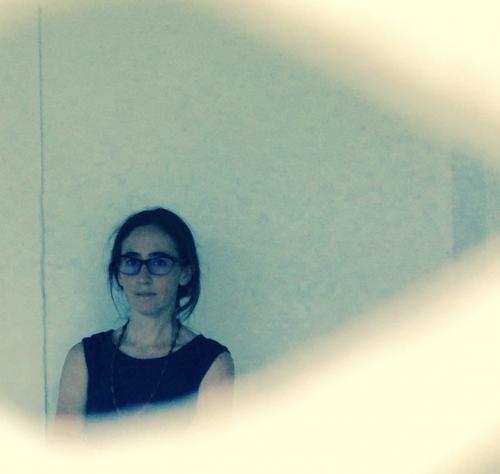EHRI Fellow Kylie Thomas: Amsterdam’s "Hunger Winter" and the Photographs of Emmy Andriesse

Article by Kylie Thomas
The image of a young boy standing in the street in Amsterdam during the Second World War, is perhaps the most famous of Emmy Andriesse’s images that portray the terrible effects of war and starvation on the Dutch population. The child’s small somber face can be seen from the side, the light illuminating his fragile ear and his hair which seems to be standing up around his head from the cold. His thin hands are holding a large dark metal pot, a visual metonym for his empty stomach. He is dressed in an over-sized coat which covers his emaciated body up to his waist. Beneath his coat are short pants that end at his knees and his bare legs protrude below and hardly seem strong enough to bear his weight. His shoes also appear to be too large and, in spite of the cold, he is not wearing socks. The child is shown at the centre of the image and the gaze of the viewer is drawn to his face and to the quiet suffering his expression transmits. He is standing still in the frame and all the senseless suffering of war seems to be concentrated in his small body and seems to be bearing down upon him, making him seem even smaller.
The Underground Camera
This photograph is one of many remarkable images taken by Andriesse that can be viewed by accessing the vast collection of online images co-ordinated by the Netherlands Institute for War, Holocaust and Genocide Studies (NIOD), Beeldbank WW2. The images are remarkable in themselves, but even more remarkable is the fact that, as a Jewish woman who was forced into hiding when the Nazi’s occupied the Netherlands, Andriesse took a considerable risk in taking photographs at that time. She formed part of the movement that has come to be known as the "Ondergedoken Camera" (the Underground Camera) and together with Cas Oorthuys, Charles Breijer, Cobie Douma, Violette Cornelius, Ad Windig and others, documented the last years of the war. She was able to do so once she obtained forged documents through the help of Arie de Froe, Professor of Anthropology at the University of Amsterdam, and most well-known for fabricating documents to "aryanize" Jews.
Children
Andriesse’s photographs offer a way to understand the effects of the war on children – more than 150 images Andriesse took during the last year of the war depict children. In many of her photographs older children are shown taking care of their younger siblings and they stand or play in the ruins of the world destroyed by the war. These photographs allow us insight into the past and at the same time they call upon us to recognize how war continues to affect children’s lives in the present.
EHRI Fellowship
In January-February 2017 I held an EHRI fellowship at NIOD where I conducted research on the photographs of Emmy Andriesse for my book project on women, photography and resistance to oppressive regimes. The opportunity to work with archival material relating to the "Ondergedoken Camera" movement and to access the large collection of newspaper clippings relating to the Second World War and photography in the Netherlands has enriched my understanding of Andriesse’s work. In addition, the fellowship made it possible for me to engage with researchers at NIOD and in this way to develop new ways of thinking about resistance and memory in the aftermath of catastrophe.
More about Kylie Thomas
Image: ©Kylie Thomas
